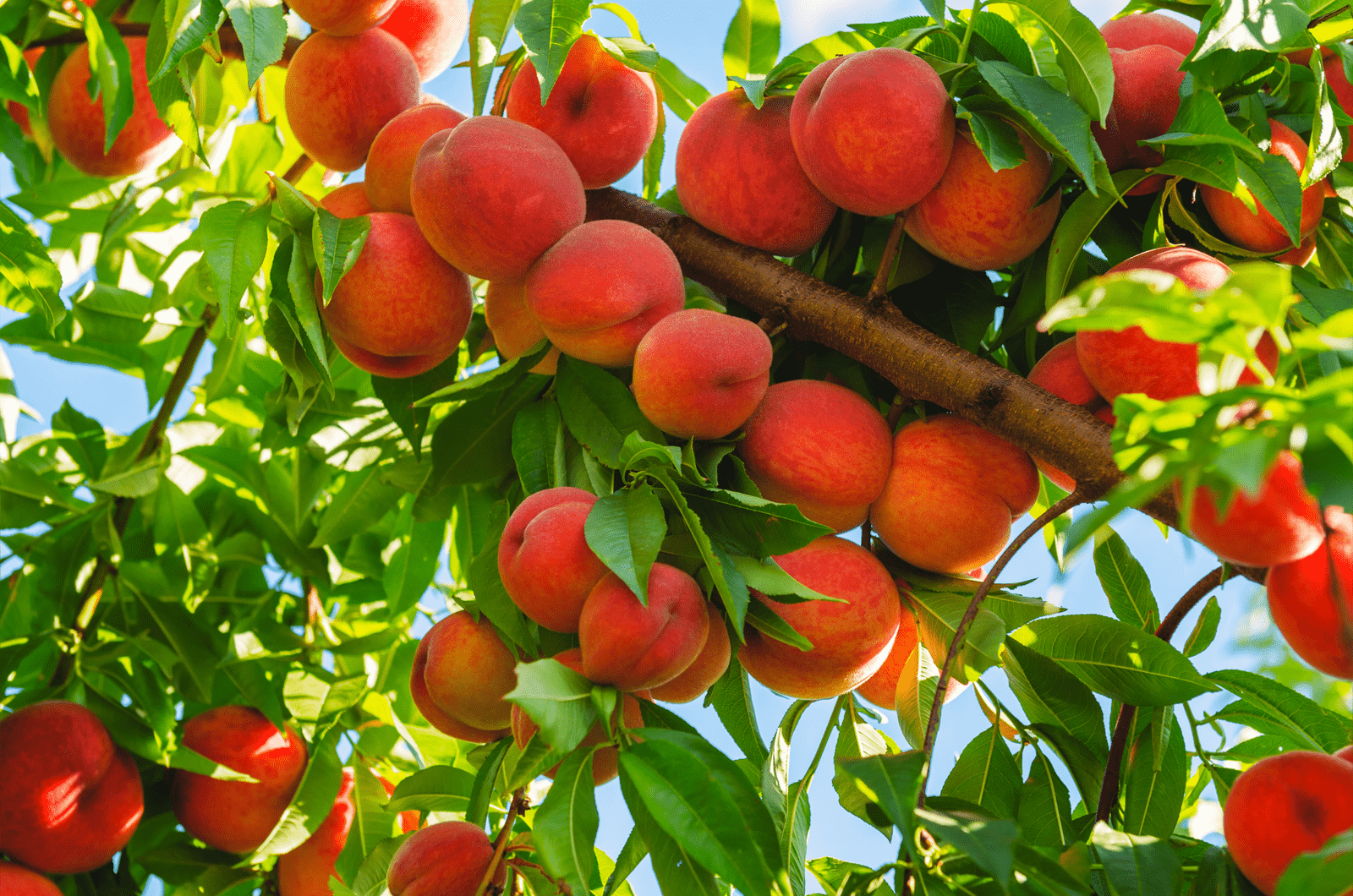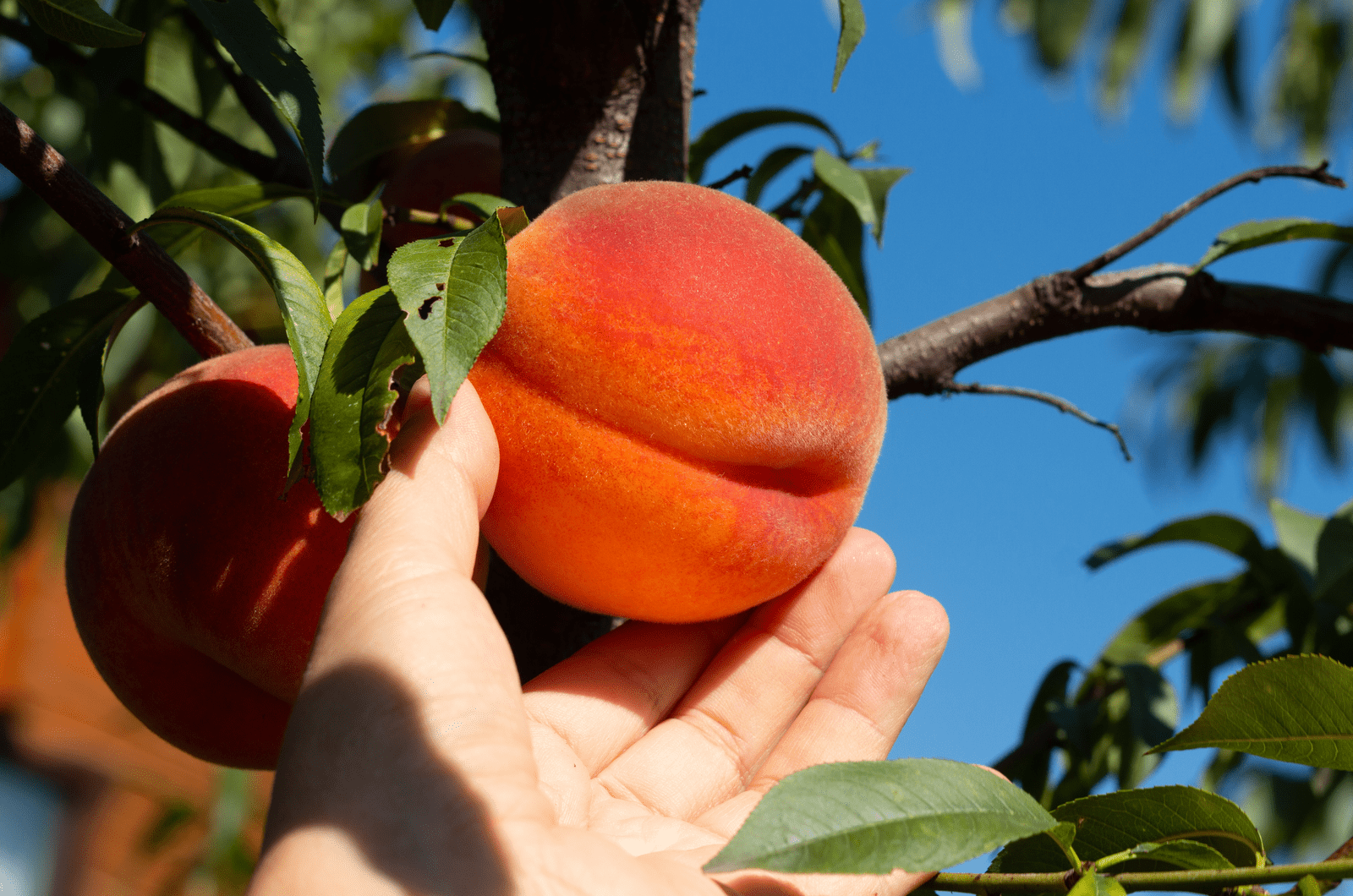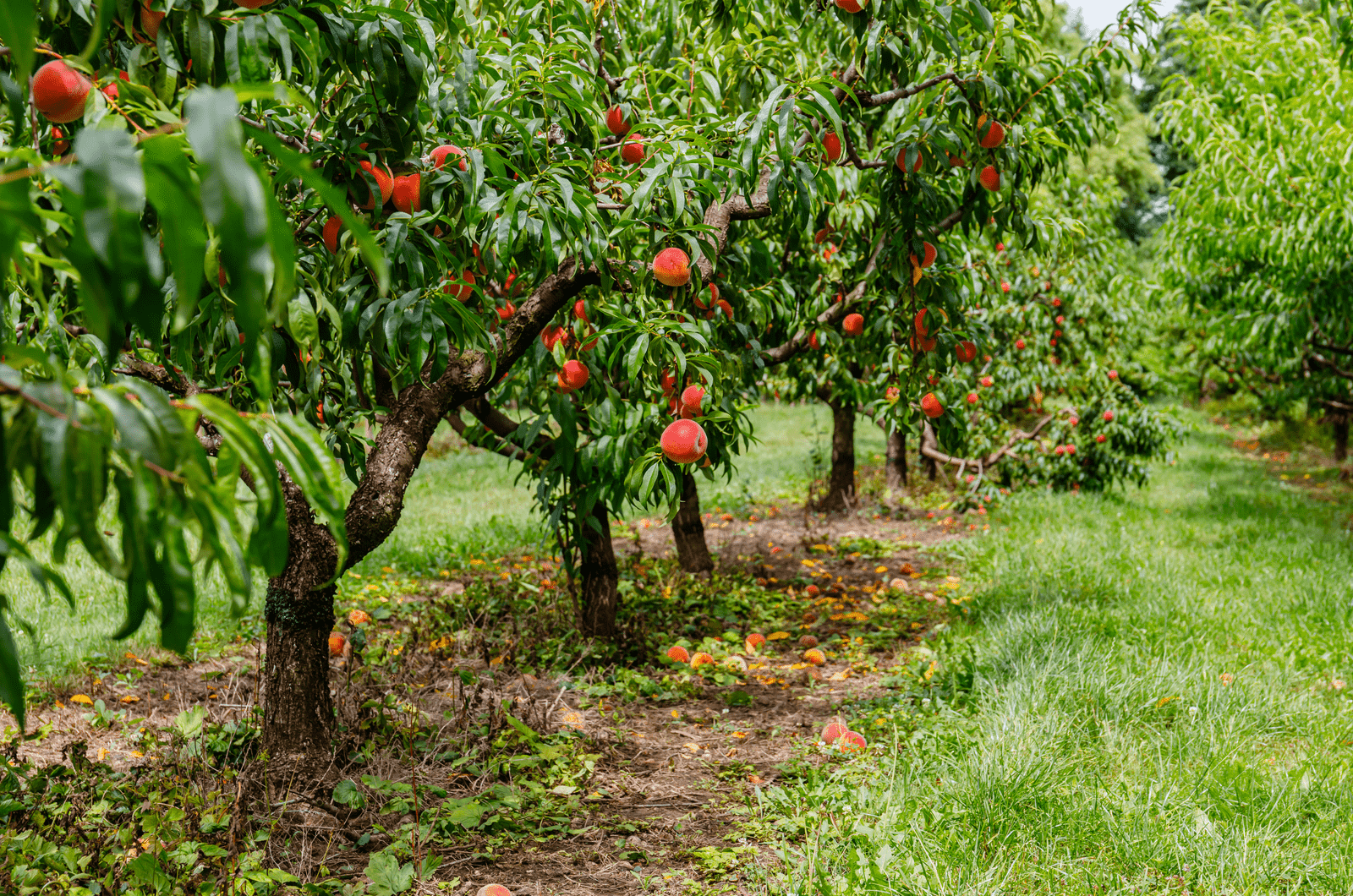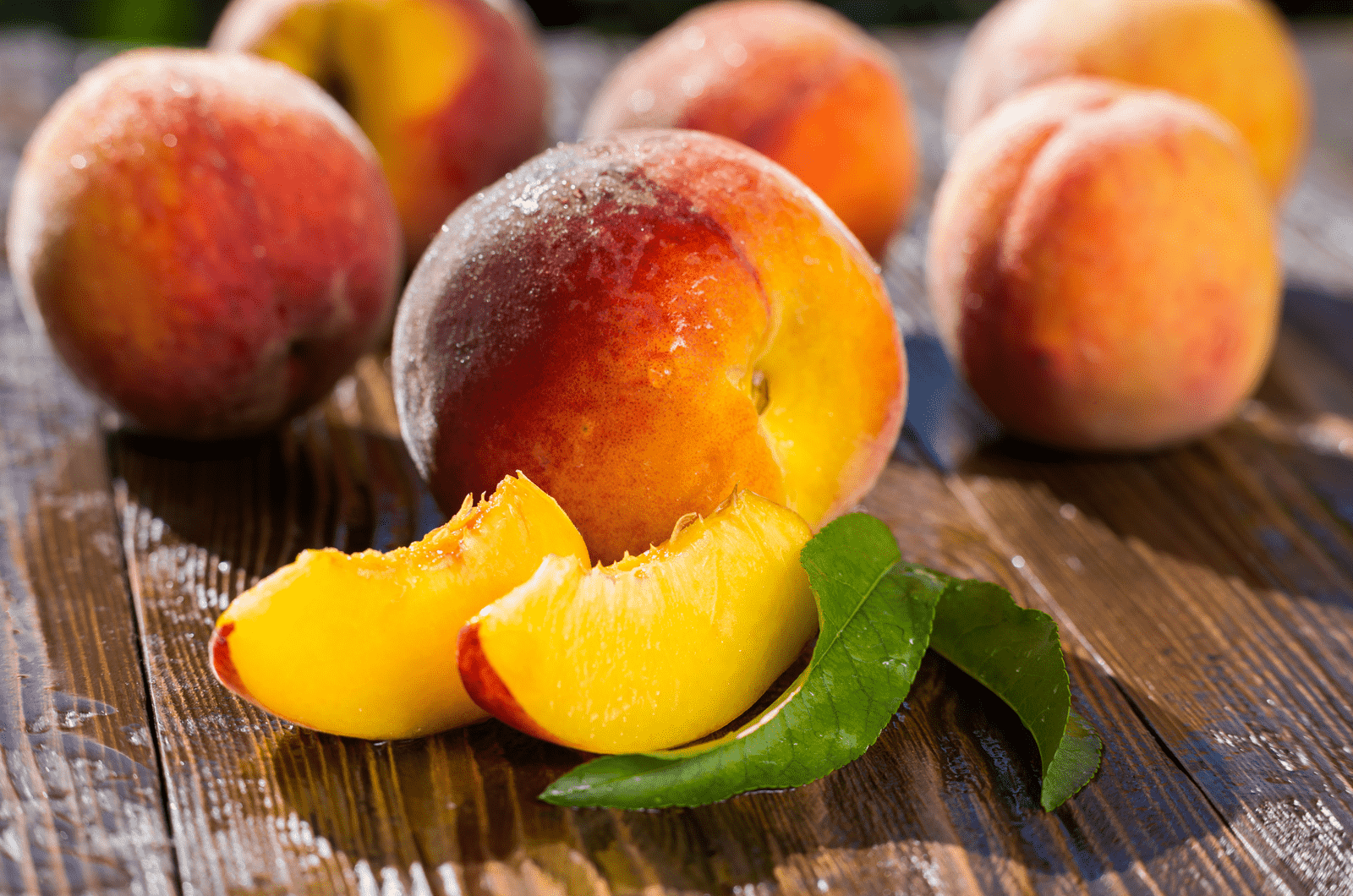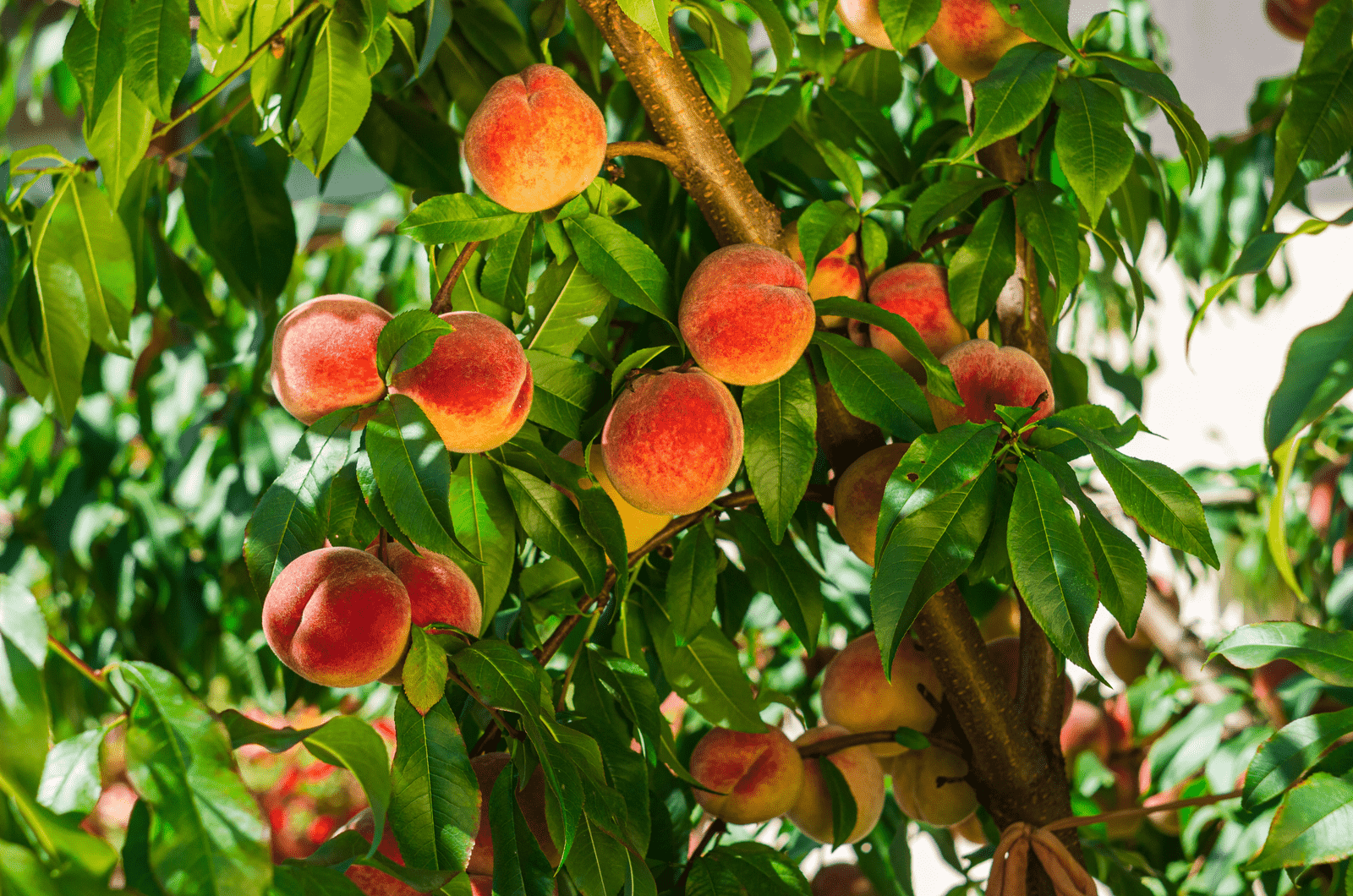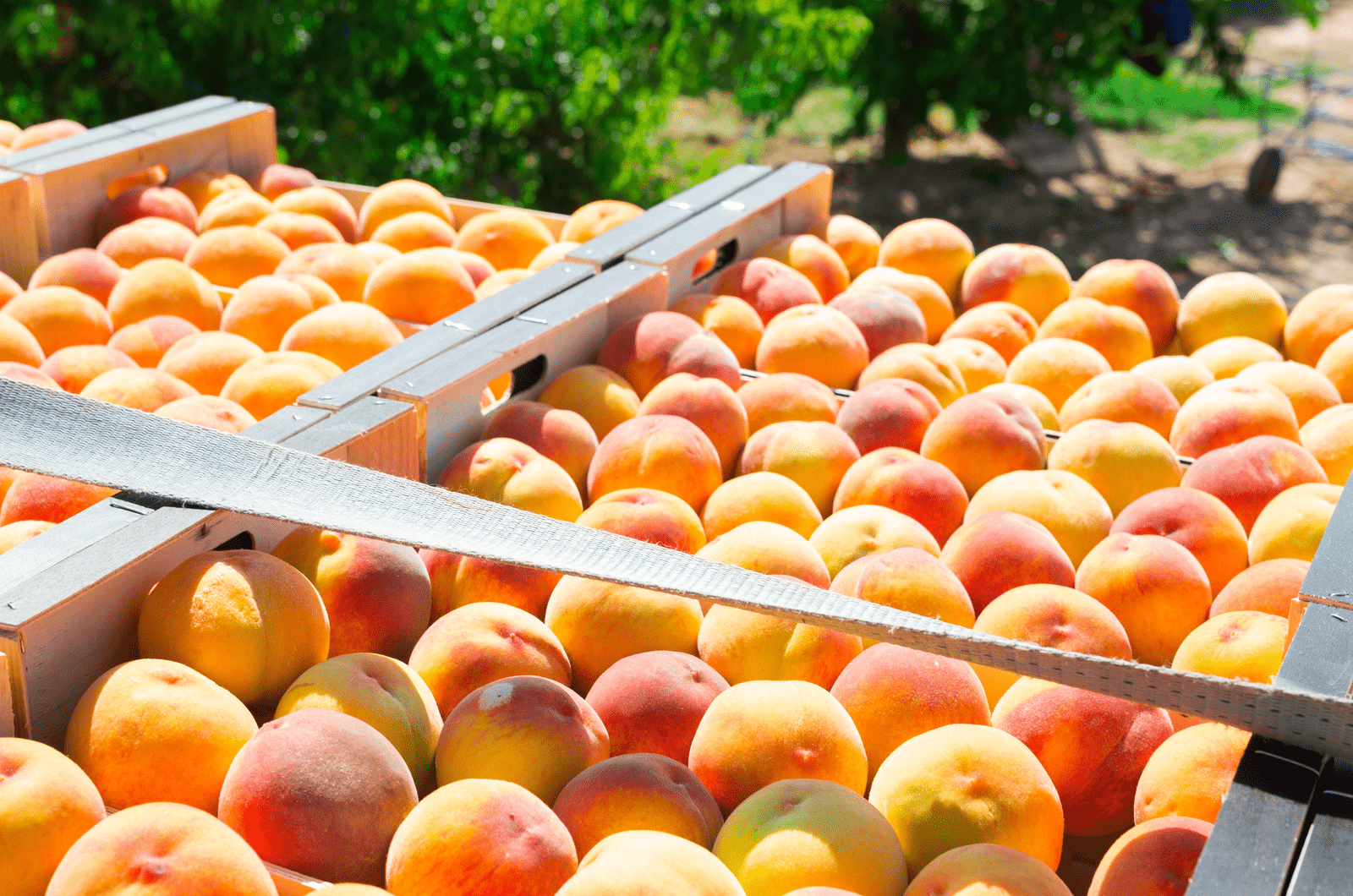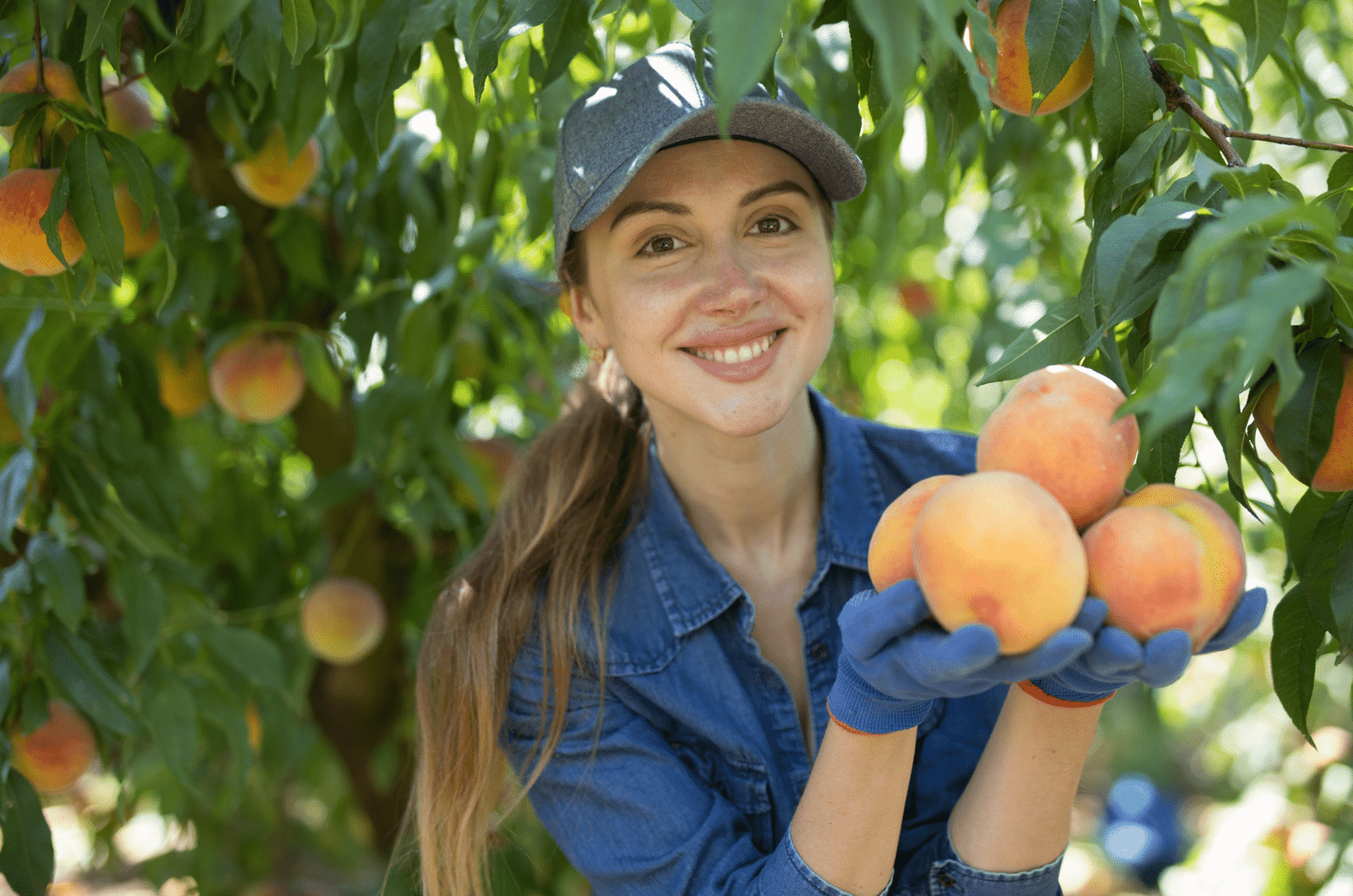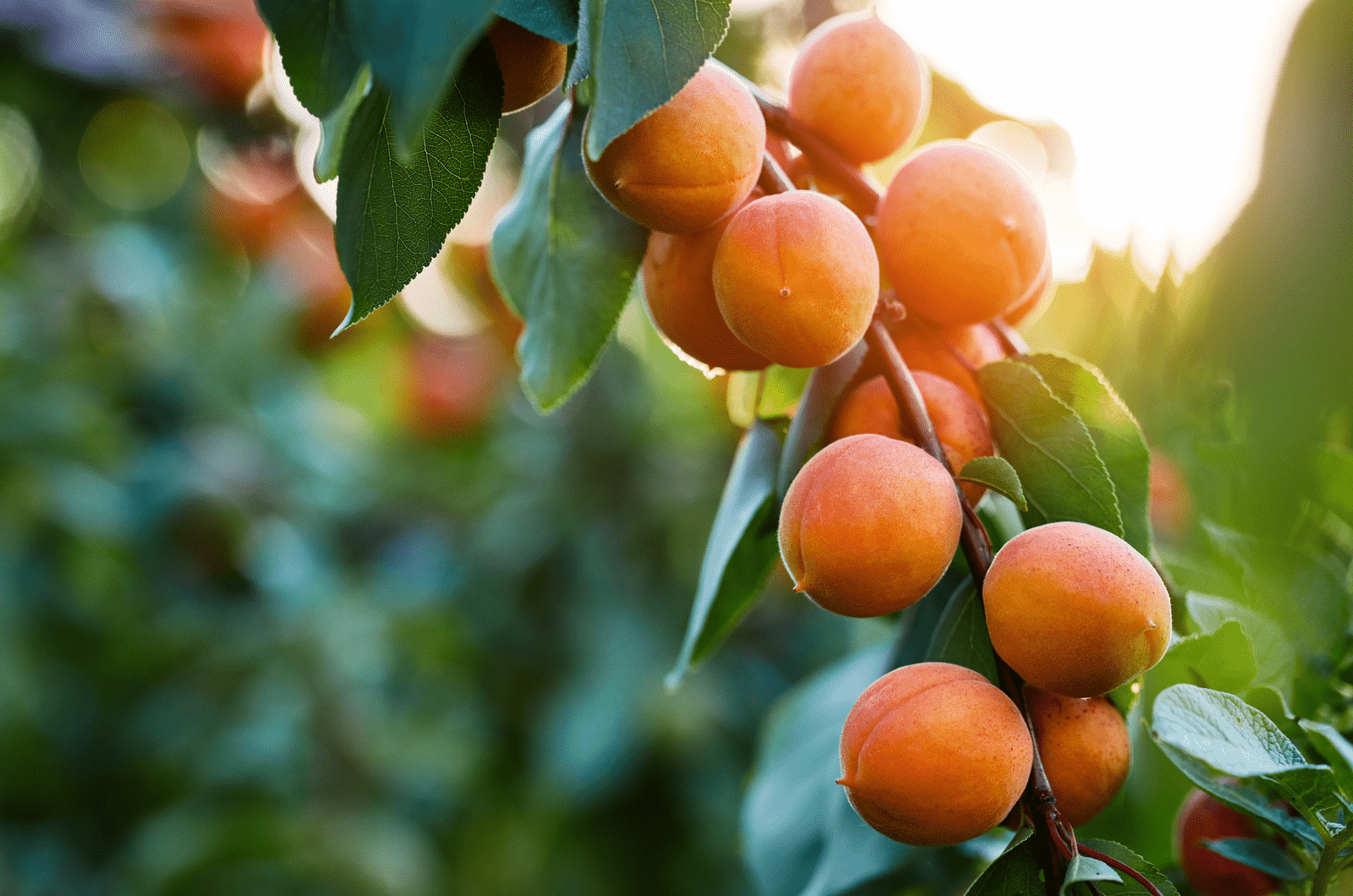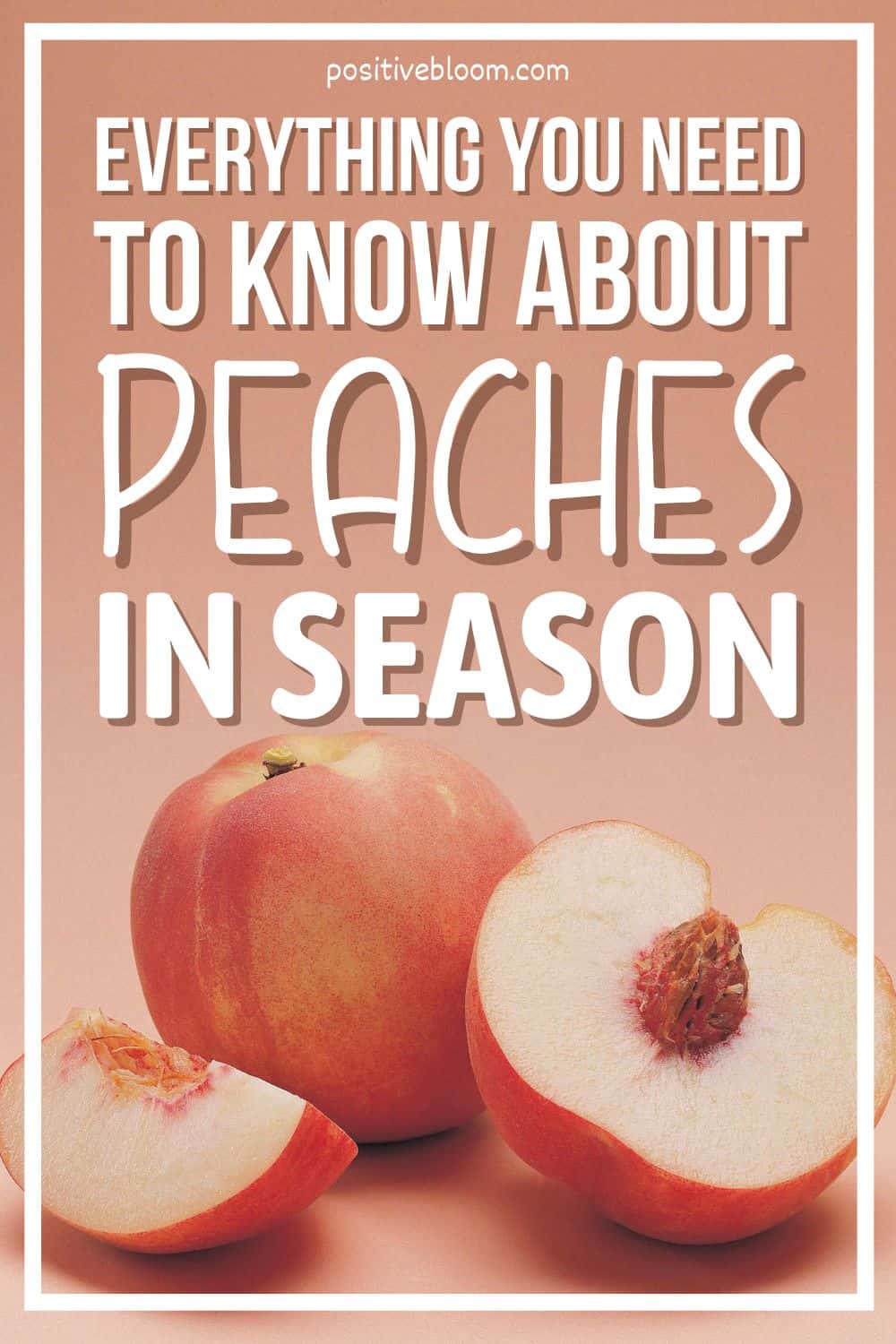We have gone many times to the farmers’ markets and got enchanted by the scent of freshly picked peaches.
And I bet we have all asked ourselves the same thing: “When are peaches in season?”, so that we’ll know when to expect our own or know when to get the best deal on the ones in the market.
But, before we answer this and some other questions, let’s look into some general specifics about peaches:
[table id=133 /]
These are just some of the specifics about peach trees, but there are so many other things you need to know about them.
In this next section, we’ll talk about the peaches which are in season in different countries, but we’ll also mention some of our favorite varieties of peaches, as not all peaches are ripe at the same time.
Finally, we’ll bring you a short care guide, so that you’ll know how to care for this amazing fruit, and we’ve also thrown in some peachtree benefits and other interesting facts.
Let’s get started!
When Are Peaches In Season?
Peaches are commercially produced around the world, but we won’t look into every country as that would take too much time.
Instead, we have chosen 10 of the most notable US states that produce peaches for commercial distribution.
You can find the ripening months for peaches in these states in the following section. You can also read about the peach season for different varieties of peaches, and we’ll bring you the 4 most common signs that peaches are ripe too.
Peach Season In Different States
Peaches with a stone or pit that clings to the juicy peach flesh might not be our first choice of peach, but if they are the ones that ripen first, we cannot restrain ourselves from buying at least a dozen.
In this section, we have compiled a list of 10 US states that are known for their peach production, so that you’ll know when to expect this yummy fruit in each state.
Georgia
Georgia peaches are well-known among peach lovers and growers. They are the first to get on the market, and we can enjoy them from late spring through to mid-late summer.
Georgia peach season starts in the middle of May with clingstone varieties. We might not be thrilled about the pits, but the taste of these peaches is something incomparable to freestones.
Semi-clingstone peaches combine the taste of clingstones with a lack of the pit that freestone peaches are characterized by. They usually ripen in early to late June.
Finally, freestone peaches are the last to mature, but they are worth the wait. Most varieties mature from late June to early August, but if you’re lucky, you can find some varieties in mid-August as well, when the peach season usually ends in Georgia.
A fun fact about Georgia is that it is often referred to as the “Peach State”, due to the remarkable quality and sweetness of its peaches.
California
California peaches welcome you with open arms from late June to mid-September. The season starts later than in Georgia, but it also ends later, which is another perk.
California soil and air are ideal for this fruit and the harvest time appears as if it’s never going to end.
Florida
Peach season in Florida is relatively short, it only lasts from early April to mid-late May. However, the stone fruit that this state produces is incredibly delicious, thanks to the nurturing sun that happens to be there all year long.
The growers from this state usually cultivate yellow peaches, since they offer a mildly acidic note that counterbalances the sweetness. This variety is also relatively easy to grow in Florida!
South Carolina
South Carolina produces more peaches than Georgia, even though the season starts somewhat later.
This sweet fruit season begins in mid-June and ends in mid-late August, and the orchards of South Carolina may even surprise us with a few apricot trees too.
The temperatures are a bit colder in South Carolina than in Georgia and Florida, so the fruit starts to ripen later in the summer, but there is still plenty of time to enjoy their sweetness.
North Carolina
North Carolina cannot stand for being surpassed by its neighbor, so the growers there have decided to grow up to 70 different peach varieties in their orchards.
The peach season lasts from June to September, but the prime time is definitely in July. That’s why you won’t have to worry about being left without the famous peach pie on the Fourth of July.
These peaches are also great when combined with raspberries, and you can make a fantastic pudding out of these two fruit varieties.
Idaho
One thing we love about Idaho is the cold. You might be surprised by this statement as you’re probably thinking, “But don’t peaches love (and need) the sun?”.
The answer is yes, peaches do love the sun, but Idaho is not “sunless.” The warm weather starts some time in June, and their peaches begin to ripen in August.
However, even though you might think that the delayed harvest time is terrible, it actually allows the Idahoans to enjoy this exquisite fruit throughout October, when the season usually ends.
Pennsylvania
California and Pennsylvania have the perfect climates for growing peaches as they are characterized by cool and refreshing springs, and dry and hot summers.
You can pick peaches and nectarines in this state from early July to mid-September, and some peach varieties continue ripening until late September.
New Jersey
New Jersey didn’t get the nickname “Garden State” without reason. The mild temperatures are perfect for growing crops and, of course, delicious peaches.
The peach season starts in early July and lasts until the middle of September due to the colder weather. However, the fresh peaches will make you forget that the Floridians have eaten this fruit in April.
Michigan
The cold weather of Michigan means that the peach season begins later than in other states. However, mid-late July is a perfect time for enjoying a homemade peach cobbler with your loved ones.
And the season lasts until late September, so it’s not as short as you might think!
Colorado
The last state on this list filled with peach orchards is Colorado. It’s not the sunniest state in the USA, but 300 days of annual sunshine are more than enough for a large harvest of peaches.
The peach season in Colorado starts in early summer and wraps up in fall, around early October.
You can enjoy homemade peach ice cream, lemonade, or a curried peach sauce throughout the summer.
Peach Season Of Different Varieties
In the following section, we bring you 6 princes among peaches and their time of ripening. These are not the only varieties of peaches in the world, but they are our favorite due to their color, scent, and of course, taste.
Different states have different peach seasons, and the same goes for different varieties of peaches.
Spring Prince Peach
The harvest time for the Spring Prince is mid-late May. You can admire the red blush on the yellow background or just enjoy their sweetness; it’s up to you.
Gold Prince Peach
The Gold Prince is another clingstone variety, famous for its irresistible taste.
They are in season usually through late May, but if the conditions are favorable, you can even pick them in early June.
June Prince Peach
The June Prince is a variety that combines the sweet taste of clingstone princes with the practicality of freestone peaches.
As the name says, it’s ready to harvest in June, or more precisely, in early to mid-June.
Scarlet Prince Peach
The Scarlet Prince is true royalty among peaches. This peach tree quickly produces fruit, and the blooms are wonderfully fragrant.
You can harvest ripe Scarlet Prince peaches from the end of June until the first few days of July.
Sun Prince Peach
The yellow fruit of a Sun Prince peach and its tangy-sweet flavor, remind us that freestone peaches are not far behind clingstone varieties when it comes to taste.
This peach is ready to be picked in mid-late July and is a perfect summer fruit.
Flame Prince Peach
The Flame Prince is a freestone variety that matures late, but it brightens your tables with red color over a bright yellow background.
This sweet peach matures in early to mid-August and has a slightly acidic note that no one can say no to.
4 Signs That Peaches Are Ripe
Now, we know when the peach season is in different states and varieties, but there are still some things that we need to discuss.
In this section, we’ll bring you 4 signs of ripeness in peaches, so you won’t have to guess whether your peach is ready to be eaten or not anymore.
Skin
A peach’s skin is the number one ripeness indicator, and it has never failed us before. When the ripening season arrives, you need to carefully inspect the skin of your peaches as it is the surest sign that a peach is ripe.
If the skin around the stem is wrinkly, that means that the fruit is ready to be harvested. Wrinkly skin indicates that water has started to leave the flesh, which intensifies the flavor.
Touch
The next thing that can help you to pick the perfect peaches, is feeling whether they are soft or not.
We prefer somewhat harder-fleshed peaches as they don’t drip, but soft ones are simply irresistible too, and we forget about the dripping once we taste the sweetness of their flavor.
Color
Contrary to popular opinion, the red color of peaches doesn’t indicate their ripeness; it’s only there due to sun exposure.
But, you can still distinguish between ripe and unripe peaches based on their color. Look for the yellow fruits as this color is a sure indicator of sweet peaches.
You shouldn’t pick fruits with patches of green as they are still not ripe, and their flavor wouldn’t be satisfactory.
Scent
Finally, the last thing that can help you pick your peaches on time is their fragrance. It’s the same as with other food: if it smells good, it tastes good.
Therefore, peaches that smell sweet, taste sweet, and those that don’t, well…
How To Care For Peaches
Now, you know all the essential things about when to pick peaches, but what you don’t know is how to care for them.
We have decided to bring you a short care guide in case you need any help growing this excellent fruit.
Light
Peach trees need full sun in order to produce the sweetest fruit, so you should plant them in a location where they will be exposed to sunlight all day long, or at least for 8 hours each day.
An east-facing location is perfect, as the morning sun is particularly important, and we rely on it to dry the morning dew.
Water
If you live in a region that receives enough rainfall throughout the hot summer months, you don’t have to worry about watering your peaches.
However, if the climate is arider, you should probably water the trees deeply twice or thrice a week.
You can also mulch the trees, which helps to retain moisture.
Climate And Temperature
Peach trees need hot summer temperatures and winters that are colder than 45 °F (7 °C) to produce the perfect fruit.
Every peach variety has a specific number of chill hours that it needs to be exposed to in order to grow effectively, so you should check these numbers before choosing the peach variety that you want to grow.
If you’ve picked green peaches, you can always leave them at room temperature and wait a few days for them to ripen.
Soil And Fertilizer
Peach trees thrive in mildly acidic to neutral soils, with a pH level between 6.0 and 7.0. This fruit also requires a fertile, well-draining medium for healthy growth.
If the soil is clogged in water, the tree will most likely die, so you should add compost or humus to the ground soil to make it both fertile and well-draining.
Also, if you’re growing compact peaches in containers, you should use compost based on loam for the best results.
Fertilizer
You can fertilize your peach trees in spring if their size hasn’t increased since last year, but you should stop fertilizing before the beginning of June, as it can affect the taste.
Young trees need phosphorus-based fertilizers to help them with root development, but established trees should be fertilized with nitrogen- and potassium-rich fertilizers, which help with vegetative growth and fruit production.
Fun Facts About Peaches
Don’t think that’s all we’ve got to say about peaches. This fruit is incredibly healthy and has an amazing history that we cannot but share with you.
History And Backgrounds
Peach, Prunus Persica, is a fruit brought to us from Eastern China, Zhejiang province, to be more specific. It was believed to have been cultivated since 2000 BC, but recent archaeological findings indicate that this fruit has been grown since 6000 BC.
Thanks to the Silk Road, this fantastic fruit was brought to Persia, where it has been widely grown, hence the name Persica. A legend says that it was Alexander the Great who brought the peach to Greece after conquering Persia in the second half of the 3rd century BC.
There is no clear evidence of how this fruit reached U.S. soil. Some say it was the Franciscan monks who brought it to Florida in the 15th century. In contrast, others claim it was actually George Minifie, a horticulturist from Britain, who brought it with him in the second half of the 17th century when he settled in Virginia.
Either way, this fruit has spread throughout the South due to its easy cultivation and maintenance.
Finally, the commercial production of peaches started in the 19th century in Georgia, South Carolina, Delaware, Maryland, and of course, Virginia.
Benefits Of Peaches
This fruit is not only tasty; peaches have many health benefits, such as being filled with antioxidants that reduce inflammation that can lead to heart diseases and diabetes.
The antioxidants and vitamin C they contain are also connected to cancer prevention, that is, they help remove free radicals that cause certain cancers, but more studies should be conducted on this.
This fruit also contains vitamin and beta-Carotene, which turns into vitamin A when it enters the body. Vitamin A improves vision and keeps your skin healthy.
There’s also been research showing that vitamin A protects people from oral and lung cancers.
There are many more benefits to peaches, such as regulating blood diseases and heart rate, due to the potassium content, and keeping your bones and teeth strong due to their fluoride.
So you see, this fruit isn’t only attractive for its taste; it will keep you healthy and strong as well.
Q & A Corner
We’ve talked about which peaches are in season in different states, their benefits, history, care guide, etc. We’ve talked a lot!
But there are still some things about peaches that we need to cover, and we’ve decided to do that in the form of a Q & A.
Are peaches in season in Ontario?
Yes, there is a peach season in Ontario, which begins in late July and lasts until early August.
The season is not long, but the peach varieties in Ontario are so tempting that every peach lover needs to try them.
Early varieties, such as the Harrow Diamond and Early Redhaven, are juicy, sweet, and yet acidic. We love to eat them fresh, although you can preserve them if you want.
However, mid-season and late peach varieties are best for preserving and cooking, but you won’t be making a mistake if you eat them fresh.
Is it cheaper to buy peaches in season?
Yes, it is cheaper to buy peaches in season, but that isn’t the only perk. When buying any fruit or vegetable in season, you will get the freshest ingredients, most nutrients, and the best flavor for a low price.
Don’t miss out on it!
What is the best type of peach?
Donut peaches are considered the sweetest variety, and the all-time favorite is the Saturn peach.
This UFO-looking peach may not be the most attractive in the world, but its taste makes up for it.
If you don’t like clingstone varieties, you can always choose an Elberta peach, a freestone peach that won’t disappoint even the harshest of judges.
If you’re like me and often find peach fuzz irritating on your lips, you can always choose a naked peach, a nectarine. We believe they are a perfect fruit as you get the sweet flavor of peaches but with no fuzz.
We also love baking peach pies, and the Redhaven variety has triumphed in this field. It is resistant to browning, and its taste will make everyone jealous of your cooking.
What are the best months to eat peaches?
Peaches are best eaten in the summer months, or rather, from late May to late September. However, the peak of the season in Florida starts in April, and in Idaho, you can eat fresh peaches in October.
It all depends on the area you live in, but varieties that ripen from June to September are the most common ones.
Let’s Wrap up
In this article, you can read all the important things about peaches in season. Now you know when the peach season starts in the top 10 most significant commercial peach production states.
Also, not all varieties of peaches mature at the same time, and we have brought you some of our favorite peach varieties and their ripening times.
However, you should always check for ripeness signs before picking peaches, but we’ve covered you for that too.
We also brought you a short care guide, so that you can start your own peach orchard with any variety you want.
The history of peaches is incredible; I mean, who would’ve thought they are actually from China and not Italy or some other European country.
But, whatever their habitat, they are healthy fruits that are worth incorporating into your everyday diet (at least during the summer months).
Like this post? Share or pin it for later!

